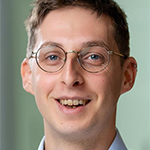Why did you choose a job in this profession?
Prior to joining the profession, I worked in academia as a research fellow in the field of quantum computing. After deciding to leave academia, I knew I wanted to use the knowledge and skills I had acquired, but also that I wanted more variety in the topics and technology I worked with. In this profession, I am constantly learning about new technologies and about the law.
What was the application process like?
I applied by sending my CV and a cover letter. I then received an invitation to an online interview. Ahead of the interview I was sent a patent to read through, and part of the interview involved a general discussion of the technology. I was also sent a brief written exercise to complete before the interview. Another part of the interview involved a discussion of this written exercise. The online interview also involved a more general interview about myself, my background, and interest in the role.
After the online interview, I was then invited to an interview in the London office with a few members of the team. I was asked about my skills and experience, and about my interest in the profession and Venner Shipley. After this interview, I also had the opportunity to meet a couple of the current trainees at Venner Shipley, and ask them any questions I had about the role itself.
Throughout the entire application process everyone was very friendly.
What are your main duties?
Primarily, I work on patent prosecution, which for each case involves reading the patent application and documents from the patent office, and working with a supervisor to formulate a response and amendments we could make in order to get the application granted.
I also work on the drafting of patent applications. Initially, this involves meeting with the inventors to understand and discuss their inventions, as well as ask any questions. From the meeting, and using any additional documents the inventors share, patent drafting then includes writing a set of claims which give the broadest possible protection for their invention and a detailed description of how the invention works.
On-the-job training is an important part of the role, and I’ve learned a great deal through the patent prosecution and drafting cases which I have worked on. This on-the-job training is also complemented by formal training and courses.






